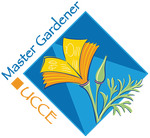
Gardening for Pollinators
What Are Pollinators?

About 75% of all flowering plants depend on animals like bees, moths, butterflies or birds to move their pollen from plant to plant.
Pollination is the movement of pollen from one flower to another flower of the same species. It leads to fertilization which leads to the production of seeds and fruit. Nearly all ecosystems depend on pollination of flowering plants for their existence and survival.
Most pollinators (about 200,000 species) are beneficial insects such as flies, beetles, wasps, ants butterflies and bees.

Other pollinators include vertebrates such as bats, birds and small mammals.
Attracting Pollinators to Your Garden

Plant a seasonal sequence of flowers that will bloom from late Winter through early Fall. Look at your garden every few weeks to see what is blooming and what gaps you may have and plant new plant types accordingly.

DIVERSITY: Planting a variety of flowering plants with different types of flower structures will bring a greater variety of pollinators to your garden. Hummingbirds have long beaks and tongues to reach inside flowers structure for nectar. Bees need both pollen and nectar to meet their needs. A diverse flower garden will provide for a wider variety of pollinators.
NATIVE PLANTS: Native plants support native bee and other pollinators. Native bees feed on native plants more frequently than nonnative plants. You can help support California’s approximately 1,600 species of bees simply by planting native plants.

WATER: Maintaining a shallow dish of water helps some pollinators, such as honeybees, to survive. Place a few small pebbles or corks to prevent bees from drowning in bird baths.

SHELTER: All pollinators require shelter of some type to lay eggs, hide from predators or raise young. Types of cover include birdhouses, native


AVOID PESTICIDES: Avoid use of pesticides that can harm valuable pollinators and beneficial insects, whenever possible. Refer to the UC IPM website for more information on controlling home garden pests using the least toxic methods.

